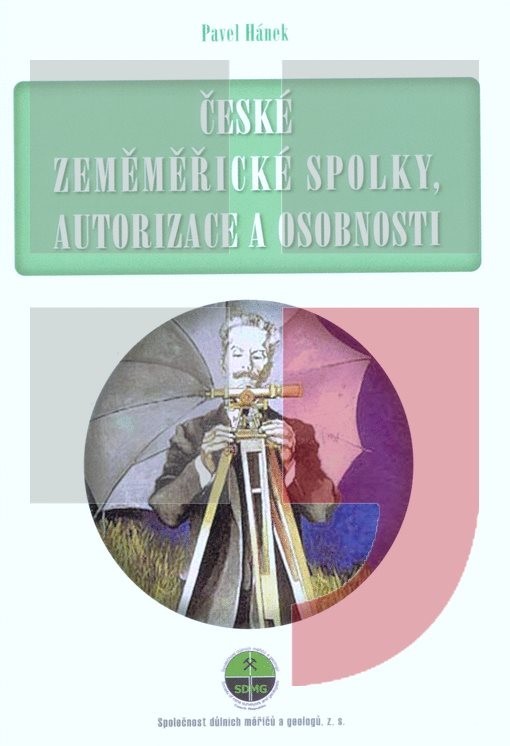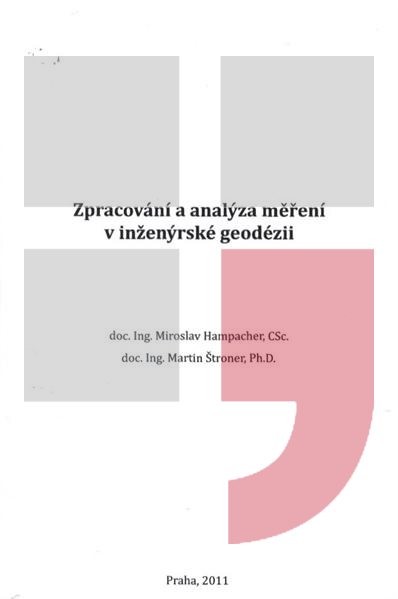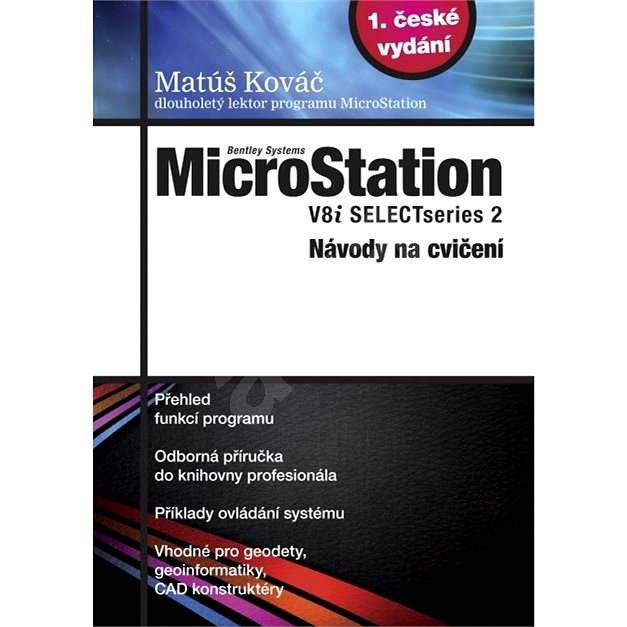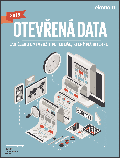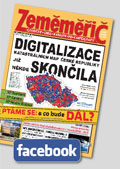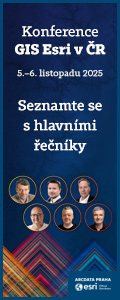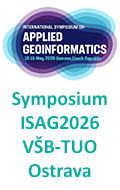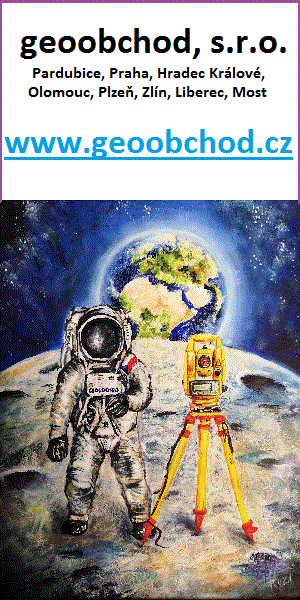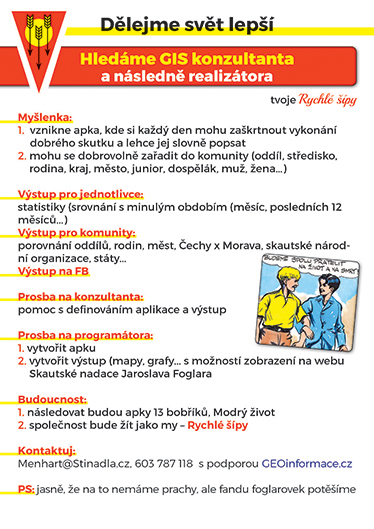zprávy
zdroje zpráv:Referent KN – poskytování informací KN
15.8.2016 11:04 ČÚZK - volná místa Katastrální úřad pro hlavní město Prahu, Katastrální pracoviště Praha vypisuje výběrové řízení na místo Referent KN – poskytování informací KNReferent KN – obnova katastrálního operátu
15.8.2016 11:01 ČÚZK - volná místa Katastrální úřad pro hlavní město Prahu, Katastrální pracoviště Praha vypisuje výběrové řízení na místo Referent KN – obnova katastrálního operátuReferent KN – obnova katastrálního operátu
15.8.2016 11:01 ČÚZK - předpisy a opatření Katastrální úřad pro hlavní město Prahu Katastrální pracoviště Prahavypisuje výběrové řízení na místo
Referent KN – obnova katastrálního operátu
Referent KN – návrh zápisu, kontrola a zplatnění (1)
15.8.2016 10:55 ČÚZK - volná místa Katastrální úřad pro hlavní město Prahu, Katastrální pracoviště Praha vypisuje výběrové řízení na místo Referent KN – návrh zápisu, kontrola a zplatnění (1)Referent KN – návrh zápisu, kontrola a zplatnění (1)
15.8.2016 10:55 ČÚZK /Urady/Katastralni-urady/Katastralni-urady/Katastralni-urad-pro-hlavni-mesto-Prahu/Uredni-deska/Oznameni-a-jina-uredni-sdeleni/Volna-mista/Referent-KN-–-navrh-zapisu,-kontrola-a-zplatneni-(Referent KN – návrh zápisu, kontrola a zplatnění (1)
15.8.2016 10:55 ČÚZK - předpisy a opatření Katastrální úřad pro hlavní město Prahu Katastrální pracoviště Prahavypisuje výběrové řízení na místo
Referent KN – návrh zápisu, kontrola a zplatnění
Ministerstvo dopravy vyhlašuje výzvy na podporu silniční telematiky z OPD
15.8.2016 9:25 Český Kosmický PortálŘídicí orgán Operačního programu Doprava (OPD) vyhlašuje první dvě samostatné výzvy pro předkládání žádostí o podporu v rámci specifického cíle 2.3 OPD (Zlepšení řízení dopravního provozu a zvyšování bezpečnosti dopravního provozu). Výzvy jsou určeny především na podporu projektů zaměřených na inteligentní dopravní systémy (ITS), a to v rámci silniční sítě TEN-T a v rámci největších měst ČR. Celkem je v těchto výzvách žadatelům souhrnně k dispozici alokace až ve výši 4,395 miliardy Kč (příspěvek EU z Fondu soudržnosti). Žadatelé mohou obdržet podporu až ve výši 85 % ze způsobilých výdajů projektu.
Ministerstvo dopravy vyhlašuje výzvy na podporu silniční telematiky z OPD
15.8.2016 9:25 Český Kosmický PortálŘídicí orgán Operačního programu Doprava (OPD) vyhlašuje první dvě samostatné výzvy pro předkládání žádostí o podporu v rámci specifického cíle 2.3 OPD (Zlepšení řízení dopravního provozu a zvyšování bezpečnosti dopravního provozu). Výzvy jsou určeny především na podporu projektů zaměřených na inteligentní dopravní systémy (ITS), a to v rámci silniční sítě TEN-T a v rámci největších měst ČR. Celkem je v těchto výzvách žadatelům souhrnně k dispozici alokace až ve výši 4,395 miliardy Kč (příspěvek EU z Fondu soudržnosti). Žadatelé mohou obdržet podporu až ve výši 85 % ze způsobilých výdajů projektu.
Ministerstvo dopravy vyhlašuje výzvy na podporu silniční telematiky z OPD
15.8.2016 9:25 Český Kosmický PortálŘídicí orgán Operačního programu Doprava (OPD) vyhlašuje první dvě samostatné výzvy pro předkládání žádostí o podporu v rámci specifického cíle 2.3 OPD (Zlepšení řízení dopravního provozu a zvyšování bezpečnosti dopravního provozu). Výzvy jsou určeny především na podporu projektů zaměřených na inteligentní dopravní systémy (ITS), a to v rámci silniční sítě TEN-T a v rámci největších měst ČR. Celkem je v těchto výzvách žadatelům souhrnně k dispozici alokace až ve výši 4,395 miliardy Kč (příspěvek EU z Fondu soudržnosti). Žadatelé mohou obdržet podporu až ve výši 85 % ze způsobilých výdajů projektu.
Ministerstvo dopravy vyhlašuje výzvy na podporu silniční telematiky z OPD
15.8.2016 9:25 Český Kosmický PortálŘídicí orgán Operačního programu Doprava (OPD) vyhlašuje první dvě samostatné výzvy pro předkládání žádostí o podporu v rámci specifického cíle 2.3 OPD (Zlepšení řízení dopravního provozu a zvyšování bezpečnosti dopravního provozu). Výzvy jsou určeny především na podporu projektů zaměřených na inteligentní dopravní systémy (ITS), a to v rámci silniční sítě TEN-T a v rámci největších měst ČR. Celkem je v těchto výzvách žadatelům souhrnně k dispozici alokace až ve výši 4,395 miliardy Kč (příspěvek EU z Fondu soudržnosti). Žadatelé mohou obdržet podporu až ve výši 85 % ze způsobilých výdajů projektu.
GIS v plánování měst a regionů - poslední místa
15.8.2016 7:00 Česká asociace pro geoinformace Posledních zhruba 15 volných míst zbývá na konfreneci GIS v plánování měst a regionů 2016, kterou 15. září sploupořádá CAGI. Registraci lze provést pomocí webového formuláře na webu akce.A jaká jsou témata konference?
Územně analytické podklady po 10 letech od uvedení do života
Webové portály územního plánování
Participativní GIS, VGI a
Paragrafové znění zákona o České komoře zeměměřičů - 2
15.8.2016 6:56 Zeměměřič 1. čtení novely zákona č. 360/1991 proběhlo 20., 22. 4., 6. 5. 2016 na 44. schůzi PS PČR. Návrh zákona přikázán k projednání výborům. Výbor pro veřejnou správu a regionální rozvoj doporučuje sněmovní tisk projednat a schválit s drobnými pozměňovacími návrhy...Záplavová území
15.8.2016 2:00 Cenia - Katalog metadat ČR - INSPIRE Záplavová území - Q100, Q20, Q5, aktivní zóny, hlásné profily, Pravidelně aktualizované v případě změn - nabytí právní moci opatření obecné povahy o stanovení záplavového území a vymezení aktivní zóny. Poslední aktualizace 8/2016.INSPIRE stahovací služba pro téma Využití území - kraj Plzeňský
15.8.2016 2:00 Cenia - Katalog metadat ČR - INSPIRE Uveřejnění datové sady výkresu Plochy a koridory nadmístního významu ze Zásad územního rozvoje Plzeňského kraje. Odkaz na výdejní modul.Obraz katastrální mapy
15.8.2016 2:00 Cenia - Katalog metadat ČR - INSPIRE Obraz katastrální mapy Zlínského kraje.Stav dat k 1. 7. 2016. Vznik spojením DKM, KMD, KM-D a ÚKM(orientační mapy parcel - vektorové).INSPIRE datová sada pro téma Využití území - kraj Zlínský
15.8.2016 2:00 Cenia - Katalog metadat ČR - INSPIRE INSPIRE datová sada pro téma Využití území - kraj Zlínský, odvozená z ploch a koridorů zásad územního rozvoje Zlínského kraje, aktualizované 2012.INSPIRE datová sada pro téma Využití území - kraj Plzeňský
15.8.2016 2:00 Cenia - Katalog metadat ČR - INSPIRE Uveřejnění zásad územního rozvoje Plzeňského kraje jako kompletní dokumentace. Odkaz na uveřejnění textové a grafické části ve formátech PDF a odkazy na mapové služby včetně informací jak získat vektorová data.20160812Odborný referent/vrchní referent oddělení aktualizace geodetických informací kat-KP Praha-vý
12.8.2016 11:02 ČÚZK /Urady/Katastralni-urady/Katastralni-urady/Katastralni-urad-pro-Stredocesky-kraj/Katastralni-pracoviste/KP-Praha-vychod/O-uradu/Aktuality/20150901Oznameni-o-vyhlaseni-vyberoveho-rizeni-(4)20160812Odborný referent/vrchní referent oddělení aktualizace geodetických informací kat-KP Praha-vý
12.8.2016 11:02 ČÚZK - předpisy a opatření Na úřední elektronické desce Katastrálního úřadu pro Středočeský kraj, v sekci "Oznámení a jiná úřední sdělení" bylo vystaveno "Oznámení o vyhlášení výběrového řízení na služební místo Odborný referent/vrchní referent oddělení aktualizace geodetických informací katastru nemovitostí pro Katastrální pracoviště Praha-východ"20160812-Oznámení na pozice KP Praha-východ
12.8.2016 11:00 ČÚZK - předpisy a opatření Na úřední elektronické desce Katastrálního úřadu pro Středočeský kraj, v sekci "Oznámení a jiná úřední sdělení" byla vystavena dvě "Oznámení o vyhlášení výběrového řízení na služební místo rada/odborný rada_1_právního oddělení a odborný referent oddělení dokumentace katastru nemovitostí - vše je Katastrální pracoviště Praha-východ"20160812-Oznámení na pozice KP Praha-východ
12.8.2016 11:00 ČÚZK - předpisy a opatření Na úřední elektronické desce Katastrálního úřadu pro Středočeský kraj, v sekci "Oznámení a jiná úřední sdělení" byla vystavena tři "Oznámení o vyhlášení výběrového řízení na služební místo rada/odborný rada_1_právního oddělení, rada/odborný rada_2_právního oddělení a odborný referent oddělení dokumentace katastru nemovitostí - vše je Katastrální pracoviště Praha-východ"20160812-Oznámení na pozice KP Praha-východ
12.8.2016 11:00 ČÚZK /Urady/Katastralni-urady/Katastralni-urady/Katastralni-urad-pro-Stredocesky-kraj/Katastralni-pracoviste/KP-Praha-vychod/O-uradu/Aktuality/20152509-Oznameni-na-reditele-PZ-(1)20160812Odborný referent/vrchní referent oddělení aktualizace geodetických informací kat-KP Praha-vý
12.8.2016 10:56 ČÚZK - předpisy a opatření V části "Úřední deska", v sekci "Oznámení a jiná úřední sdělení" bylo vystaveno "Oznámení o vyhlášení výběrového řízení na služební místo odborný referent/vrchní referent oddělení aktualizace geodetických informací katastru nemovitostí pro Katastrální pracoviště Praha-východ"20160812Odborný referent/vrchní referent oddělení aktualizace geodetických informací kat-KP Praha-vý
12.8.2016 10:56 ČÚZK /Urady/Katastralni-urady/Katastralni-urady/Katastralni-urad-pro-Stredocesky-kraj/O-uradu/Aktuality/20150901Oznameni-o-vyhlaseni-vyberoveho-rizeni-(4)20160812-Oznámení na pozice KP Praha-východ
12.8.2016 10:50 ČÚZK - předpisy a opatření V části "Úřední deska", v sekci "Oznámení a jiná úřední sdělení" byla vystavena tři "Oznámení o vyhlášení výběrového řízení na služební místo rada/odborný rada_1_právního oddělení, rada/odborný rada_2_právního oddělení a odborný referent oddělení dokumentace katastru nemovitostí - vše je Katastrální pracoviště Praha-východ"20160812-Oznámení na pozice KP Praha-východ
12.8.2016 10:50 ČÚZK /Urady/Katastralni-urady/Katastralni-urady/Katastralni-urad-pro-Stredocesky-kraj/O-uradu/Aktuality/20152509-Oznameni-na-reditele-TS,-PZ-a-PV-(15)20160812-Oznámení na pozice KP Praha-východ
12.8.2016 10:50 ČÚZK - předpisy a opatření V části "Úřední deska", v sekci "Oznámení a jiná úřední sdělení" byla vystavena dvě "Oznámení o vyhlášení výběrového řízení na služební místo rada/odborný rada_1_právního oddělení a odborný referent oddělení dokumentace katastru nemovitostí - vše je Katastrální pracoviště Praha-východ"Odborný referent oddělení dokumentace katastru nemovitostí
12.8.2016 10:43 ČÚZK - volná místa Katastrální úřad pro Středočeský kraj, Katastrální pracoviště Praha-východ vypisuje výběrové řízení na místo Odborný referent oddělení dokumentace katastru nemovitostíOdborný referent oddělení dokumentace katastru nemovitostí
12.8.2016 10:43 ČÚZK /Urady/Katastralni-urady/Katastralni-urady/Katastralni-urad-pro-Stredocesky-kraj/Uredni-deska/Oznameni-a-jina-uredni-sdeleni/Volna-mista/Odborny-referent-oddeleni-dokumentace-katastru-(1)Odborný referent oddělení dokumentace katastru nemovitostí
12.8.2016 10:43 ČÚZK - předpisy a opatření Katastrální úřad pro Středočeský kraj Katastrální pracoviště Praha-východvypisuje výběrové řízení na místo Odborný referent oddělení dokumentace katastru nemovitostí
Odborný referent oddělení dokumentace katastru nemovitostí
Odborný referent/vrchní referent oddělení aktualizace geodetických informací katastru nemovitostí
12.8.2016 10:41 ČÚZK /Urady/Katastralni-urady/Katastralni-urady/Katastralni-urad-pro-Stredocesky-kraj/Uredni-deska/Oznameni-a-jina-uredni-sdeleni/Volna-mista/Odborny-referent-vrchni-referent-oddeleni-aktu-(1)Odborný referent/vrchní referent oddělení aktualizace geodetických informací katastru nemovitostí
12.8.2016 10:41 ČÚZK - předpisy a opatření Katastrální úřad pro Středočeský kraj Katastrální pracoviště Praha-východvypisuje výběrové řízení na místo Odborný referent/vrchní referent oddělení aktualizace geodetických
Odborný referent/vrchní referent oddělení aktualizace geodetických informací katastru nemovitostí
Odborný referent/vrchní referent oddělení aktualizace geodetických informací katastru nemovitostí
12.8.2016 10:41 ČÚZK - volná místa Katastrální úřad pro Středočeský kraj, Katastrální pracoviště Praha-východ vypisuje výběrové řízení na místo Odborný referent/vrchní referent oddělení aktualizace geodetických informací katastru nemovitostíRada/odborný rada_2_právního oddělení
12.8.2016 10:39 ČÚZK - volná místa Katastrální úřad pro Středočeský kraj, Katastrální pracoviště Praha-východ vypisuje výběrové řízení na místo Rada/odborný rada_2_právního odděleníRada/odborný rada_2_právního oddělení
12.8.2016 10:39 ČÚZK /Urady/Katastralni-urady/Katastralni-urady/Katastralni-urad-pro-Stredocesky-kraj/Uredni-deska/Oznameni-a-jina-uredni-sdeleni/Volna-mista/Rada-odborny-rada_2_pravniho-oddeleniRada/odborný rada_2_právního oddělení
12.8.2016 10:39 ČÚZK - předpisy a opatření Katastrální úřad pro Středočeský kraj Katastrální pracoviště Praha-východvypisuje výběrové řízení na místo
Rada/odborný rada_2_právního oddělení
Rada/odborný rada_1_právního oddělení
12.8.2016 10:38 ČÚZK - volná místa Katastrální úřad pro Středočeský kraj, Katastrální pracoviště Praha-východ vypisuje výběrové řízení na místo Rada/odborný rada_1_právního odděleníRada/odborný rada_1_právního oddělení
12.8.2016 10:38 ČÚZK /Urady/Katastralni-urady/Katastralni-urady/Katastralni-urad-pro-Stredocesky-kraj/Uredni-deska/Oznameni-a-jina-uredni-sdeleni/Volna-mista/Rada-odborny-rada_1_pravniho-oddeleniRada/odborný rada_1_právního oddělení
12.8.2016 10:38 ČÚZK - předpisy a opatření Katastrální úřad pro Středočeský kraj Katastrální pracoviště Praha-východvypisuje výběrové řízení na místo Rada/odborný rada_1_právního oddělení
Rada/odborný rada_1_právního oddělení
Katastr nemovitostí v právní i technické praxi XXII.
12.8.2016 7:07 Zeměměřič Tradiční seminář se uskuteční 6. října 2016 v Třebíči.Oznámení o přerušení dodávky elektřiny - pobočka Rakovník
12.8.2016 0:00 Státní pozemkový úřad Z důvodu přerušení dodávky elektřiny bude 12. 8. 2016 uzavřena pobočka Rakovník.GNSS and the Internet of Medical Things
11.8.2016 14:57 European GNSS Agency
From emergency caller localisation to monitoring senior citizens, according to the European GNSS Agency (GSA), space-based technologies are already improving our health and safety and are set to see increasing use in the near future.
Space solutions can play a significant role in addressing a number of key health and safety-related challenges currently facing society. From emergency caller location to the monitoring of elderly patients, Europe’s global navigation satellite systems (GNSS) and Earth observation programmes – including Galileo, the European Geostationary Navigation Overlay Service (EGNOS) and Copernicus – are already having a substantial impact on our health and safety. Furthermore, according to the European GNSS Agency (GSA), their role will only increase in the near future.
For instance, one area where GNSS and medical technology are increasingly working together is in the Internet of Things (IoT) or, in this case, the ‘Internet of Medical Things’. According to semiconductor manufacturer ARM Director of Healthcare and Emerging Technologies Karthik Ranjan, accurate positioning data can enable better management of resources while also reducing costs.
Ranjan predicts that by 2020 we will see a “tsunami of healthcare devices” come to market, with around 1.5 billion personal sensors being used to monitor the continuum of health – including blood, sweat and urine analysis. “The combination of remote sensing and smartphone communication could help change behaviour and enable people to make better lifestyle choices,” he says.
He also predicts that such systems will reduce the need to visit a doctor or hospital for a vast majority of medical cases. “Sharing such health data as your glucose status for a diabetic with your trusted social networks can reduce costs and improve prevention of diabetic episodes,” he adds.
The silver lining
As Europe’s population continues to age, the so-called ‘Silver Economy’ will also be an impetus for the development of GNSS-enhanced medical and healthcare related devices and services. “Although we are living longer than ever before, we haven’t yet taken the necessary steps to ensure that these added years are healthy years,” says STMicroelectronics’ Mustapha Bouraoui. “What we need are solutions that promote autonomy, regular activity and general health for our senior citizens.”
Bouraoui believes that IoT will have a major impact here. For example, his company is currently involved with the Alliance for Internet of Things Innovation (AIOTI), an EU initiative aimed at building the European IoT ecosystem and one that the GSA is actively involved with. The AIOTI is already supporting some large-scale demonstrations, including five pilot projects on smart living environments for an ageing population and wearable devices for smart ecosystems.
Tracking for safety
Another area where GNSS can play an important role in the healthcare arena is with applications for tracking vulnerable people – such as those suffering from Alzheimer’s disease. “Within the health and social care sectors, there is a need for the technology to be ‘invisible’, easy to use and cheap in order to enable universal safety and security for citizens,” says Satsafe Limited’s Stuart Millward. “Location-aware, multi-sensing devices could, for example, provide a radically lower cost monitoring solution for senior citizens and other vulnerable groups and has the potential to significantly reduce avoidable hospital admissions.”
An example of what these tracking devices could look like can be seen in what’s happening at Weenect. The company produces small devices that come with a smartphone app that allows for simultaneous tracking of up to four trackers. The service also establishes geo-fencing areas and alerts users if the tracked subject leaves the defined area. Some devices also include an ‘SOS’ button and voice call – a useful addition for senior citizens.
Mitigating natural disasters
In addition to their role in medical care and healthy living, GNSS and Earth observation are also having an impact on emergency response. This is particularly true when it comes to both mitigating against and responding to natural disasters. For example, the FP7 FLOODIS project has developed a cloud and mobile based flood information and management system. The project makes use of both Earth observation and EGNOS to provide an accurate disaster alert and information service, in particular for short-term flood forecasting. With the addition of Galileo in the near future, project coordinators look to add more fully integrated social media information in order to improve the system’s flood prediction models.
The FLOODIS approach is also being extended to other emergency scenarios via the Horizon 2020 I-REACT project.
Another example of the important role that European GNSS plays in emergency response can be found in the aviation sector. Here, EGNOS is helping emergency response helicopters fly into difficult conditions – thus saving more lives. The Pildo Labs’ 5 LIVES project is currently demonstrating Point in Space (PinS) procedures for helicopters using EGNOS’ robust positioning data in order to enable flight in almost all visibility conditions. The project intends to demonstrate the procedures in five specific scenarios: hospital emergency services, landing approaches in challenging (mountainous) environments, firefighting helicopters, maritime search and rescue, and emergency teams monitoring and helicopter EVAC.
It’s a bird, it’s a plane it’s – a UAVThe use of Unmanned Aerial Vehicles (UAVs) for telemedicine applications is a rapidly developing field. They can play a crucial role in delivery, monitoring, and search and rescue activities. As UAVs are capable of operating in hazardous environments, they are capable of rapidly responding into areas where human first responders may not be able to venture. |
Media note: This feature can be republished without charge provided the European GNSS Agency (GSA) is acknowledged as the source at the top or the bottom of the story. You must request permission before you use any of the photographs on the site. If you republish, we would be grateful if you could link back to the GSA website (http://www.gsa.europa.eu).
GNSS and the Internet of Medical Things
11.8.2016 14:57 European GNSS Agency
From emergency caller localisation to monitoring senior citizens, according to the European GNSS Agency (GSA), space-based technologies are already improving our health and safety and are set to see increasing use in the near future.
Space solutions can play a significant role in addressing a number of key health and safety-related challenges currently facing society. From emergency caller location to the monitoring of elderly patients, Europe’s global navigation satellite systems (GNSS) and Earth observation programmes – including Galileo, the European Geostationary Navigation Overlay Service (EGNOS) and Copernicus – are already having a substantial impact on our health and safety. Furthermore, according to the European GNSS Agency (GSA), their role will only increase in the near future.
For instance, one area where GNSS and medical technology are increasingly working together is in the Internet of Things (IoT) or, in this case, the ‘Internet of Medical Things’. According to semiconductor manufacturer ARM Director of Healthcare and Emerging Technologies Karthik Ranjan, accurate positioning data can enable better management of resources while also reducing costs.
Ranjan predicts that by 2020 we will see a “tsunami of healthcare devices” come to market, with around 1.5 billion personal sensors being used to monitor the continuum of health – including blood, sweat and urine analysis. “The combination of remote sensing and smartphone communication could help change behaviour and enable people to make better lifestyle choices,” he says.
He also predicts that such systems will reduce the need to visit a doctor or hospital for a vast majority of medical cases. “Sharing such health data as your glucose status for a diabetic with your trusted social networks can reduce costs and improve prevention of diabetic episodes,” he adds.
The silver lining
As Europe’s population continues to age, the so-called ‘Silver Economy’ will also be an impetus for the development of GNSS-enhanced medical and healthcare related devices and services. “Although we are living longer than ever before, we haven’t yet taken the necessary steps to ensure that these added years are healthy years,” says STMicroelectronics’ Mustapha Bouraoui. “What we need are solutions that promote autonomy, regular activity and general health for our senior citizens.”
Bouraoui believes that IoT will have a major impact here. For example, his company is currently involved with the Alliance for Internet of Things Innovation (AIOTI), an EU initiative aimed at building the European IoT ecosystem and one that the GSA is actively involved with. The AIOTI is already supporting some large-scale demonstrations, including five pilot projects on smart living environments for an ageing population and wearable devices for smart ecosystems.
Tracking for safety
Another area where GNSS can play an important role in the healthcare arena is with applications for tracking vulnerable people – such as those suffering from Alzheimer’s disease. “Within the health and social care sectors, there is a need for the technology to be ‘invisible’, easy to use and cheap in order to enable universal safety and security for citizens,” says Satsafe Limited’s Stuart Millward. “Location-aware, multi-sensing devices could, for example, provide a radically lower cost monitoring solution for senior citizens and other vulnerable groups and has the potential to significantly reduce avoidable hospital admissions.”
An example of what these tracking devices could look like can be seen in what’s happening at Weenect. The company produces small devices that come with a smartphone app that allows for simultaneous tracking of up to four trackers. The service also establishes geo-fencing areas and alerts users if the tracked subject leaves the defined area. Some devices also include an ‘SOS’ button and voice call – a useful addition for senior citizens.
Mitigating natural disasters
In addition to their role in medical care and healthy living, GNSS and Earth observation are also having an impact on emergency response. This is particularly true when it comes to both mitigating against and responding to natural disasters. For example, the FP7 FLOODIS project has developed a cloud and mobile based flood information and management system. The project makes use of both Earth observation and EGNOS to provide an accurate disaster alert and information service, in particular for short-term flood forecasting. With the addition of Galileo in the near future, project coordinators look to add more fully integrated social media information in order to improve the system’s flood prediction models.
The FLOODIS approach is also being extended to other emergency scenarios via the Horizon 2020 I-REACT project.
Another example of the important role that European GNSS plays in emergency response can be found in the aviation sector. Here, EGNOS is helping emergency response helicopters fly into difficult conditions – thus saving more lives. The Pildo Labs’ 5 LIVES project is currently demonstrating Point in Space (PinS) procedures for helicopters using EGNOS’ robust positioning data in order to enable flight in almost all visibility conditions. The project intends to demonstrate the procedures in five specific scenarios: hospital emergency services, landing approaches in challenging (mountainous) environments, firefighting helicopters, maritime search and rescue, and emergency teams monitoring and helicopter EVAC.
It’s a bird, it’s a plane it’s – a UAVThe use of Unmanned Aerial Vehicles (UAVs) for telemedicine applications is a rapidly developing field. They can play a crucial role in delivery, monitoring, and search and rescue activities. As UAVs are capable of operating in hazardous environments, they are capable of rapidly responding into areas where human first responders may not be able to venture. |
Media note: This feature can be republished without charge provided the European GNSS Agency (GSA) is acknowledged as the source at the top or the bottom of the story. You must request permission before you use any of the photographs on the site. If you republish, we would be grateful if you could link back to the GSA website (http://www.gsa.europa.eu).
GNSS and the Internet of Medical Things
11.8.2016 14:57 European GNSS Agency
From emergency caller localisation to monitoring senior citizens, according to the European GNSS Agency (GSA), space-based technologies are already improving our health and safety and are set to see increasing use in the near future.
Space solutions can play a significant role in addressing a number of key health and safety-related challenges currently facing society. From emergency caller location to the monitoring of elderly patients, Europe’s global navigation satellite systems (GNSS) and Earth observation programmes – including Galileo, the European Geostationary Navigation Overlay Service (EGNOS) and Copernicus – are already having a substantial impact on our health and safety. Furthermore, according to the European GNSS Agency (GSA), their role will only increase in the near future.
For instance, one area where GNSS and medical technology are increasingly working together is in the Internet of Things (IoT) or, in this case, the ‘Internet of Medical Things’. According to semiconductor manufacturer ARM Director of Healthcare and Emerging Technologies Karthik Ranjan, accurate positioning data can enable better management of resources while also reducing costs.
Ranjan predicts that by 2020 we will see a “tsunami of healthcare devices” come to market, with around 1.5 billion personal sensors being used to monitor the continuum of health – including blood, sweat and urine analysis. “The combination of remote sensing and smartphone communication could help change behaviour and enable people to make better lifestyle choices,” he says.
He also predicts that such systems will reduce the need to visit a doctor or hospital for a vast majority of medical cases. “Sharing such health data as your glucose status for a diabetic with your trusted social networks can reduce costs and improve prevention of diabetic episodes,” he adds.
The silver lining
As Europe’s population continues to age, the so-called ‘Silver Economy’ will also be an impetus for the development of GNSS-enhanced medical and healthcare related devices and services. “Although we are living longer than ever before, we haven’t yet taken the necessary steps to ensure that these added years are healthy years,” says STMicroelectronics’ Mustapha Bouraoui. “What we need are solutions that promote autonomy, regular activity and general health for our senior citizens.”
Bouraoui believes that IoT will have a major impact here. For example, his company is currently involved with the Alliance for Internet of Things Innovation (AIOTI), an EU initiative aimed at building the European IoT ecosystem and one that the GSA is actively involved with. The AIOTI is already supporting some large-scale demonstrations, including five pilot projects on smart living environments for an ageing population and wearable devices for smart ecosystems.
Tracking for safety
Another area where GNSS can play an important role in the healthcare arena is with applications for tracking vulnerable people – such as those suffering from Alzheimer’s disease. “Within the health and social care sectors, there is a need for the technology to be ‘invisible’, easy to use and cheap in order to enable universal safety and security for citizens,” says Satsafe Limited’s Stuart Millward. “Location-aware, multi-sensing devices could, for example, provide a radically lower cost monitoring solution for senior citizens and other vulnerable groups and has the potential to significantly reduce avoidable hospital admissions.”
An example of what these tracking devices could look like can be seen in what’s happening at Weenect. The company produces small devices that come with a smartphone app that allows for simultaneous tracking of up to four trackers. The service also establishes geo-fencing areas and alerts users if the tracked subject leaves the defined area. Some devices also include an ‘SOS’ button and voice call – a useful addition for senior citizens.
Mitigating natural disasters
In addition to their role in medical care and healthy living, GNSS and Earth observation are also having an impact on emergency response. This is particularly true when it comes to both mitigating against and responding to natural disasters. For example, the FP7 FLOODIS project has developed a cloud and mobile based flood information and management system. The project makes use of both Earth observation and EGNOS to provide an accurate disaster alert and information service, in particular for short-term flood forecasting. With the addition of Galileo in the near future, project coordinators look to add more fully integrated social media information in order to improve the system’s flood prediction models.
The FLOODIS approach is also being extended to other emergency scenarios via the Horizon 2020 I-REACT project.
Another example of the important role that European GNSS plays in emergency response can be found in the aviation sector. Here, EGNOS is helping emergency response helicopters fly into difficult conditions – thus saving more lives. The Pildo Labs’ 5 LIVES project is currently demonstrating Point in Space (PinS) procedures for helicopters using EGNOS’ robust positioning data in order to enable flight in almost all visibility conditions. The project intends to demonstrate the procedures in five specific scenarios: hospital emergency services, landing approaches in challenging (mountainous) environments, firefighting helicopters, maritime search and rescue, and emergency teams monitoring and helicopter EVAC.
It’s a bird, it’s a plane it’s – a UAVThe use of Unmanned Aerial Vehicles (UAVs) for telemedicine applications is a rapidly developing field. They can play a crucial role in delivery, monitoring, and search and rescue activities. As UAVs are capable of operating in hazardous environments, they are capable of rapidly responding into areas where human first responders may not be able to venture. |
Media note: This feature can be republished without charge provided the European GNSS Agency (GSA) is acknowledged as the source at the top or the bottom of the story. You must request permission before you use any of the photographs on the site. If you republish, we would be grateful if you could link back to the GSA website (http://www.gsa.europa.eu).
GNSS and the Internet of Medical Things
11.8.2016 14:57 European GNSS Agency
From emergency caller localisation to monitoring senior citizens, according to the European GNSS Agency (GSA), space-based technologies are already improving our health and safety and are set to see increasing use in the near future.
Space solutions can play a significant role in addressing a number of key health and safety-related challenges currently facing society. From emergency caller location to the monitoring of elderly patients, Europe’s global navigation satellite systems (GNSS) and Earth observation programmes – including Galileo, the European Geostationary Navigation Overlay Service (EGNOS) and Copernicus – are already having a substantial impact on our health and safety. Furthermore, according to the European GNSS Agency (GSA), their role will only increase in the near future.
For instance, one area where GNSS and medical technology are increasingly working together is in the Internet of Things (IoT) or, in this case, the ‘Internet of Medical Things’. According to semiconductor manufacturer ARM Director of Healthcare and Emerging Technologies Karthik Ranjan, accurate positioning data can enable better management of resources while also reducing costs.
Ranjan predicts that by 2020 we will see a “tsunami of healthcare devices” come to market, with around 1.5 billion personal sensors being used to monitor the continuum of health – including blood, sweat and urine analysis. “The combination of remote sensing and smartphone communication could help change behaviour and enable people to make better lifestyle choices,” he says.
He also predicts that such systems will reduce the need to visit a doctor or hospital for a vast majority of medical cases. “Sharing such health data as your glucose status for a diabetic with your trusted social networks can reduce costs and improve prevention of diabetic episodes,” he adds.
The silver lining
As Europe’s population continues to age, the so-called ‘Silver Economy’ will also be an impetus for the development of GNSS-enhanced medical and healthcare related devices and services. “Although we are living longer than ever before, we haven’t yet taken the necessary steps to ensure that these added years are healthy years,” says STMicroelectronics’ Mustapha Bouraoui. “What we need are solutions that promote autonomy, regular activity and general health for our senior citizens.”
Bouraoui believes that IoT will have a major impact here. For example, his company is currently involved with the Alliance for Internet of Things Innovation (AIOTI), an EU initiative aimed at building the European IoT ecosystem and one that the GSA is actively involved with. The AIOTI is already supporting some large-scale demonstrations, including five pilot projects on smart living environments for an ageing population and wearable devices for smart ecosystems.
Tracking for safety
Another area where GNSS can play an important role in the healthcare arena is with applications for tracking vulnerable people – such as those suffering from Alzheimer’s disease. “Within the health and social care sectors, there is a need for the technology to be ‘invisible’, easy to use and cheap in order to enable universal safety and security for citizens,” says Satsafe Limited’s Stuart Millward. “Location-aware, multi-sensing devices could, for example, provide a radically lower cost monitoring solution for senior citizens and other vulnerable groups and has the potential to significantly reduce avoidable hospital admissions.”
An example of what these tracking devices could look like can be seen in what’s happening at Weenect. The company produces small devices that come with a smartphone app that allows for simultaneous tracking of up to four trackers. The service also establishes geo-fencing areas and alerts users if the tracked subject leaves the defined area. Some devices also include an ‘SOS’ button and voice call – a useful addition for senior citizens.
Mitigating natural disasters
In addition to their role in medical care and healthy living, GNSS and Earth observation are also having an impact on emergency response. This is particularly true when it comes to both mitigating against and responding to natural disasters. For example, the FP7 FLOODIS project has developed a cloud and mobile based flood information and management system. The project makes use of both Earth observation and EGNOS to provide an accurate disaster alert and information service, in particular for short-term flood forecasting. With the addition of Galileo in the near future, project coordinators look to add more fully integrated social media information in order to improve the system’s flood prediction models.
The FLOODIS approach is also being extended to other emergency scenarios via the Horizon 2020 I-REACT project.
Another example of the important role that European GNSS plays in emergency response can be found in the aviation sector. Here, EGNOS is helping emergency response helicopters fly into difficult conditions – thus saving more lives. The Pildo Labs’ 5 LIVES project is currently demonstrating Point in Space (PinS) procedures for helicopters using EGNOS’ robust positioning data in order to enable flight in almost all visibility conditions. The project intends to demonstrate the procedures in five specific scenarios: hospital emergency services, landing approaches in challenging (mountainous) environments, firefighting helicopters, maritime search and rescue, and emergency teams monitoring and helicopter EVAC.
It’s a bird, it’s a plane it’s – a UAVThe use of Unmanned Aerial Vehicles (UAVs) for telemedicine applications is a rapidly developing field. They can play a crucial role in delivery, monitoring, and search and rescue activities. As UAVs are capable of operating in hazardous environments, they are capable of rapidly responding into areas where human first responders may not be able to venture. |
Media note: This feature can be republished without charge provided the European GNSS Agency (GSA) is acknowledged as the source at the top or the bottom of the story. You must request permission before you use any of the photographs on the site. If you republish, we would be grateful if you could link back to the GSA website (http://www.gsa.europa.eu).
GNSS and the Internet of Medical Things
11.8.2016 14:57 European GNSS Agency
From emergency caller localisation to monitoring senior citizens, according to the European GNSS Agency (GSA), space-based technologies are already improving our health and safety and are set to see increasing use in the near future.
Space solutions can play a significant role in addressing a number of key health and safety-related challenges currently facing society. From emergency caller location to the monitoring of elderly patients, Europe’s global navigation satellite systems (GNSS) and Earth observation programmes – including Galileo, the European Geostationary Navigation Overlay Service (EGNOS) and Copernicus – are already having a substantial impact on our health and safety. Furthermore, according to the European GNSS Agency (GSA), their role will only increase in the near future.
For instance, one area where GNSS and medical technology are increasingly working together is in the Internet of Things (IoT) or, in this case, the ‘Internet of Medical Things’. According to semiconductor manufacturer ARM Director of Healthcare and Emerging Technologies Karthik Ranjan, accurate positioning data can enable better management of resources while also reducing costs.
Ranjan predicts that by 2020 we will see a “tsunami of healthcare devices” come to market, with around 1.5 billion personal sensors being used to monitor the continuum of health – including blood, sweat and urine analysis. “The combination of remote sensing and smartphone communication could help change behaviour and enable people to make better lifestyle choices,” he says.
He also predicts that such systems will reduce the need to visit a doctor or hospital for a vast majority of medical cases. “Sharing such health data as your glucose status for a diabetic with your trusted social networks can reduce costs and improve prevention of diabetic episodes,” he adds.
The silver lining
As Europe’s population continues to age, the so-called ‘Silver Economy’ will also be an impetus for the development of GNSS-enhanced medical and healthcare related devices and services. “Although we are living longer than ever before, we haven’t yet taken the necessary steps to ensure that these added years are healthy years,” says STMicroelectronics’ Mustapha Bouraoui. “What we need are solutions that promote autonomy, regular activity and general health for our senior citizens.”
Bouraoui believes that IoT will have a major impact here. For example, his company is currently involved with the Alliance for Internet of Things Innovation (AIOTI), an EU initiative aimed at building the European IoT ecosystem and one that the GSA is actively involved with. The AIOTI is already supporting some large-scale demonstrations, including five pilot projects on smart living environments for an ageing population and wearable devices for smart ecosystems.
Tracking for safety
Another area where GNSS can play an important role in the healthcare arena is with applications for tracking vulnerable people – such as those suffering from Alzheimer’s disease. “Within the health and social care sectors, there is a need for the technology to be ‘invisible’, easy to use and cheap in order to enable universal safety and security for citizens,” says Satsafe Limited’s Stuart Millward. “Location-aware, multi-sensing devices could, for example, provide a radically lower cost monitoring solution for senior citizens and other vulnerable groups and has the potential to significantly reduce avoidable hospital admissions.”
An example of what these tracking devices could look like can be seen in what’s happening at Weenect. The company produces small devices that come with a smartphone app that allows for simultaneous tracking of up to four trackers. The service also establishes geo-fencing areas and alerts users if the tracked subject leaves the defined area. Some devices also include an ‘SOS’ button and voice call – a useful addition for senior citizens.
Mitigating natural disasters
In addition to their role in medical care and healthy living, GNSS and Earth observation are also having an impact on emergency response. This is particularly true when it comes to both mitigating against and responding to natural disasters. For example, the FP7 FLOODIS project has developed a cloud and mobile based flood information and management system. The project makes use of both Earth observation and EGNOS to provide an accurate disaster alert and information service, in particular for short-term flood forecasting. With the addition of Galileo in the near future, project coordinators look to add more fully integrated social media information in order to improve the system’s flood prediction models.
The FLOODIS approach is also being extended to other emergency scenarios via the Horizon 2020 I-REACT project.
Another example of the important role that European GNSS plays in emergency response can be found in the aviation sector. Here, EGNOS is helping emergency response helicopters fly into difficult conditions – thus saving more lives. The Pildo Labs’ 5 LIVES project is currently demonstrating Point in Space (PinS) procedures for helicopters using EGNOS’ robust positioning data in order to enable flight in almost all visibility conditions. The project intends to demonstrate the procedures in five specific scenarios: hospital emergency services, landing approaches in challenging (mountainous) environments, firefighting helicopters, maritime search and rescue, and emergency teams monitoring and helicopter EVAC.
It’s a bird, it’s a plane it’s – a UAVThe use of Unmanned Aerial Vehicles (UAVs) for telemedicine applications is a rapidly developing field. They can play a crucial role in delivery, monitoring, and search and rescue activities. As UAVs are capable of operating in hazardous environments, they are capable of rapidly responding into areas where human first responders may not be able to venture. |
Media note: This feature can be republished without charge provided the European GNSS Agency (GSA) is acknowledged as the source at the top or the bottom of the story. You must request permission before you use any of the photographs on the site. If you republish, we would be grateful if you could link back to the GSA website (http://www.gsa.europa.eu).
Uzamčení volebních okrsků Ministerstvem vnitra
11.8.2016 14:29 ČÚZK /Uvod/Produkty-a-sluzby/RUIAN/Volebni-okrsky-v-RUIAN/Archiv-novinky/Uzamceni-volebnich-okrsku-Ministerstvem-vnitra20160421 - Uzamčení volebních okrsků Ministerstvem vnitra
11.8.2016 14:29 ČÚZK /Uvod/Produkty-a-sluzby/RUIAN/Volebni-okrsky-v-RUIAN/Archiv-novinky/Uzamceni-volebnich-okrsku-Ministerstvem-vnitra20160421 - Uzamčení volebních okrsků Ministerstvem vnitra
11.8.2016 14:29 ČÚZK - předpisy a opatření Rozhodnutím prezidenta ze dne 21. 4. 2016 byly vyhlášeny podzimní volby 2016, což bylo zveřejněno ve Sbírce zákonů dne 6. 5. 2016. Od vyhlášení voleb do vyhlášení celkových výsledků voleb Státní volební komisí jsou uzamčeny volební okrsky, a proto nyní nelze měnit vymezení volebních okrsků v RÚIAN.Uzamčení volebních okrsků Ministerstvem vnitra
11.8.2016 14:29 ČÚZK - předpisy a opatření Rozhodnutím prezidenta ze dne 21. 4. 2016 byly vyhlášeny podzimní volby 2016, což bylo zveřejněno ve Sbírce zákonů dne 6. 5. 2016. Od vyhlášení voleb do vyhlášení celkových výsledků voleb Státní volební komisí jsou uzamčeny volební okrsky, a proto nyní nelze měnit vymezení volebních okrsků v RÚIAN.20160811 - Dokument k informačním službám RUIAN
11.8.2016 14:00 ČÚZK - předpisy a opatření Změna ve vyhodnocování výběrových podmínek u informačních služeb RUIAN je popsána v dokumentu: "zmena_sluzeb.pdf".Zveřejněno 11. 8. 2016
20160811 - Dokument k informačním službám RUIAN
11.8.2016 14:00 ČÚZK /Uvod/Produkty-a-sluzby/RUIAN/RUIAN-novinky/2016/20160811-Dokument-k-informacnim-sluzbam-RUIAN20160811 - Dokument k informačním službám RUIAN
11.8.2016 14:00 ČÚZK - předpisy a opatření Změna ve vyhodnocování výběrových podmínek u informačních služeb RUIAN je popsána v dokumentu: zmena_sluzeb.pdf.Zveřejněno 11. 8. 2016




